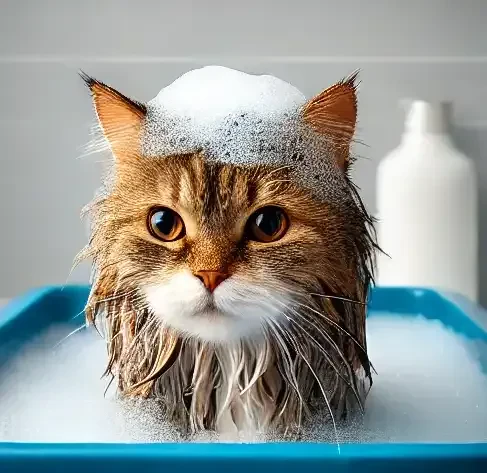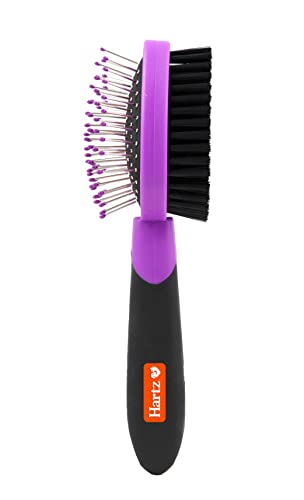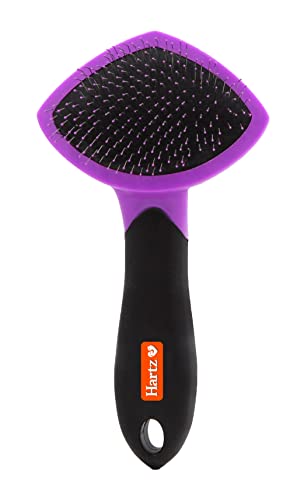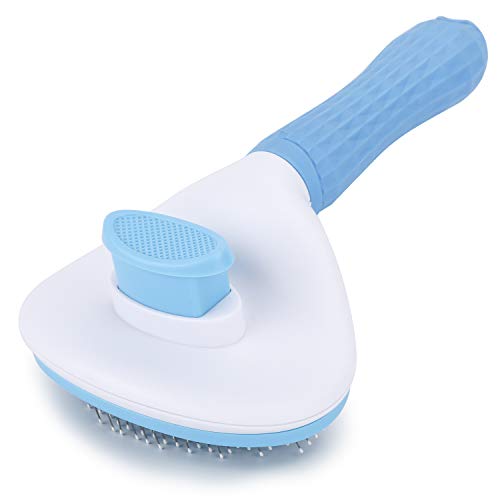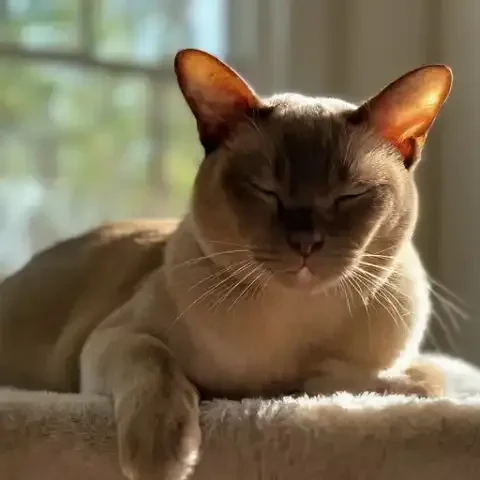Want a purrfectly happy kitty? Look beyond the playful pounces and contented purrs – the secret to a truly joyful feline companion often lies in a simple, yet essential, routine: grooming. While many cats are fastidious self-groomers, their meticulous tongues can only do so much. Think of your cat as a miniature, furry royalty; a little pampering isn't just about aesthetics – it's a vital investment in their health, comfort, and overall regal happiness. This isn't merely about brushing out tangles to make your feline look picture-perfect (though, let’s be honest, a beautifully groomed cat is a sight to behold!). It's about proactively contributing to their physical well-being, strengthening the incredible bond you share, and ensuring they live their nine lives to the absolute fullest, feeling like the pampered princes and princesses they truly are. Consider this your essential guide, your roadmap to feline grooming bliss. We'll explore every aspect, from the gentle strokes of a brush to the often-dreaded nail trim, from the occasional bath to the surprisingly important task of dental care. And fear not, grooming doesn't have to be a battle of wills! We'll equip you with the knowledge and techniques to transform grooming from a chore into a cherished, positive experience for both you and your beloved kitty.
Grooming your cat is so much more than just keeping them looking their best. Beneath the surface of a sleek, tangle-free coat lies a wealth of health and comfort benefits that regular grooming provides. Let's delve into why this routine is an indispensable part of responsible cat ownership. One of the most significant health benefits is the prevention of matting and associated skin issues. For many cat breeds, especially those with medium to long hair, their fur is prone to tangling. When neglected, these tangles quickly escalate into mats – dense, felt-like clumps of fur that can become incredibly problematic. Mats are not just unsightly; they are painful and potentially dangerous. They pull on the skin, causing irritation and discomfort, and can even restrict movement. Underneath the mat, the skin can become trapped, unable to breathe, and prone to infection. Moisture and debris can also become trapped within the mat, creating a breeding ground for bacteria and fungi, leading to hot spots and skin infections that require veterinary attention. Regular brushing is the frontline defense against mats, proactively removing loose fur and preventing tangles before they can escalate.
Another crucial health benefit is hairball reduction. Cats are meticulous groomers, and as they groom, they inevitably ingest loose fur. While small amounts of ingested fur typically pass through their digestive system without issue, larger quantities can clump together in the stomach, forming hairballs. These hairballs can cause digestive upset, including vomiting, constipation, and in severe cases, even intestinal blockages requiring veterinary intervention. Regular brushing is a highly effective way to minimize hairball formation by removing loose fur before your cat has a chance to swallow it. Think of brushing as preemptive hairball control, keeping your kitty’s digestive system happy and healthy. Beyond preventing specific issues, grooming provides an invaluable opportunity for early detection of potential health problems. As you brush and pet your cat, you become intimately familiar with their body. This routine allows you to notice any subtle changes that might otherwise go unnoticed – lumps, bumps, skin changes, areas of tenderness, or the presence of parasites like fleas or ticks. Early detection of these issues can be crucial for timely veterinary intervention and improved treatment outcomes. A seemingly simple grooming session can be a surprisingly effective health check. Furthermore, the act of brushing itself offers a direct physical benefit – stimulating blood circulation to the skin. The gentle strokes of a brush act like a mini-massage, promoting healthy blood flow to the skin surface. Improved circulation nourishes the hair follicles, promoting healthy coat growth, and can contribute to overall skin health. It's a gentle yet effective way to boost your cat's coat vitality from the outside in.
Beyond the direct health benefits, grooming significantly enhances your cat’s comfort and hygiene. Just as we appreciate a good shower to feel clean and refreshed, cats benefit from grooming to remove dirt, debris, and external parasites that they may pick up, especially if they have any outdoor access, or even just from general household dust and dander. Brushing and bathing (when necessary) help to remove these unwanted elements, keeping their coat clean and comfortable. Regular grooming also plays a vital role in maintaining coat health and shine. By removing dead hair and distributing natural skin oils along the hair shaft, brushing helps to keep the coat looking lustrous, healthy, and free of tangles and mats. A well-groomed coat is not just visually appealing; it's a sign of a healthy and well-cared-for cat. Finally, and perhaps most wonderfully, grooming provides significant behavioral and emotional benefits, strengthening the incredible bond you share with your cat. Grooming, when approached with gentleness and positivity, can become a cherished bonding ritual, fostering trust and affection between you and your feline friend. Many cats find the rhythmic strokes of a brush soothing and relaxing, associating grooming time with positive attention and gentle handling. It becomes a dedicated "us" time, reinforcing your connection and deepening your relationship. For some cats, especially when introduced positively from a young age, regular, gentle grooming can actually become a relaxing routine. It can be a calming and stress-reducing activity for them, a predictable and comforting ritual in their daily lives. This is particularly true for cats who enjoy being petted and handled; grooming can become an extension of those positive interactions, further solidifying their sense of security and well-being.
To embark on your feline grooming journey, equipping yourself with the right tools is essential. Think of it as assembling your artist's palette – the right tools will make the process easier, more effective, and more enjoyable for both you and your cat. Let's start with brushes, the workhorses of cat grooming. For cats prone to matting, especially those with medium to long hair, a slicker brush is an invaluable tool. These brushes have fine, wire bristles set at an angle, designed to gently remove mats and loose fur. They are particularly effective at reaching the undercoat and preventing tangles from forming. For cats with shorter coats, or for smoothing the coat of longer-haired cats after using a slicker brush, a bristle brush is ideal. Bristle brushes have softer bristles, often made of nylon or boar hair, and are designed to smooth the coat, remove surface debris, and distribute natural oils for a healthy shine. A metal comb, particularly one with varying tooth spacing (both wide and narrow teeth), is an essential tool for all coat types. The wider teeth are useful for gently detangling knots, while the narrower teeth are perfect for checking for fleas and ensuring you've removed all loose fur and debris. No grooming kit is truly complete without a good metal comb. For short-haired cats, or as a gentle option for daily brushing, a rubber brush or grooming mitt can be a great choice. These tools have soft rubber nubs or fingers that gently massage the skin while removing loose fur. They are particularly good for cats who are sensitive to more traditional brushes, and can also be used during bathing to help work shampoo through the coat.
Moving beyond brushes, nail clippers are another essential tool for feline grooming. Keeping your cat's nails trimmed is crucial for preventing scratches, protecting your furniture, and ensuring your cat's comfort. When it comes to nail clippers, you have a couple of options. Scissor clippers, which resemble small scissors with curved blades, are often recommended for beginners. They provide a good level of control and allow you to see exactly where you are clipping. Guillotine clippers, on the other hand, are quick and efficient. They have a small ring that you place the nail through, and a blade that slices downwards to trim the nail. While faster, they require a bit more practice to use safely and accurately. Next, let's talk shampoo. While cats are self-grooming experts, bathing is occasionally necessary. It’s crucial to use a shampoo specifically formulated for cats. Human shampoos are often too harsh for feline skin and can disrupt their natural pH balance. For cats with dry skin, a moisturizing shampoo is a great choice, helping to hydrate the skin and prevent dryness and flakiness. If your cat is unfortunately dealing with fleas, and under the guidance of your veterinarian, a flea shampoo specifically designed for cats can be helpful as part of a comprehensive flea control strategy. However, flea shampoos are not for routine bathing and should only be used when necessary and as directed by your vet. For quick clean-ups between full baths, or for cats who absolutely despise water, waterless or dry shampoos can be a lifesaver. These shampoos come in foams, powders, or wipes and allow you to cleanse the coat without the need for rinsing.
Dental care is often overlooked in cat grooming, but it’s incredibly important for their long-term health. Just like humans, cats can develop dental disease, leading to pain, tooth loss, and systemic health problems. A cat-specific toothbrush and toothpaste are essential for maintaining their oral hygiene. Never use human toothpaste on your cat, as it often contains ingredients that are toxic to them, such as xylitol. Cat toothpaste is specially formulated to be safe for ingestion and often comes in palatable flavors that cats enjoy. Finally, while routine ear cleaning is generally not recommended, having a veterinarian-approved ear cleaning solution on hand is useful for those times when cleaning is necessary. Ear cleaning should only be done when there is visible debris or discharge in the outer ear, or as advised by your veterinarian. For routine maintenance, a healthy cat’s ears typically do not require cleaning and over-cleaning can actually be irritating and disrupt the natural ear flora. Beyond these essential tools, there are some optional items that can be helpful. A dematting tool or comb is designed to safely and gently remove stubborn mats, particularly useful for long-haired breeds. Grooming wipes are convenient for quick cleanups between full grooming sessions, perfect for wiping paws after outdoor adventures or cleaning up minor messes. A soft and absorbent towel is essential for drying your cat after baths. And perhaps most importantly of all, treats! High-value treats are absolutely essential for positive reinforcement during grooming sessions, turning what could be a stressful experience into a rewarding one.
Now that you have your grooming toolkit assembled, let’s delve into the step-by-step guide to grooming your cat from head to tail. Brushing is the cornerstone of any cat grooming routine. The frequency of brushing depends largely on your cat's coat length and shedding level. As a general starting point, aim to brush long-haired cats daily, and short-haired cats at least weekly. During shedding season, you may need to increase brushing frequency for all cats. Use gentle, long strokes in the direction of fur growth. Pay particular attention to areas prone to matting, such as under the arms, belly, and behind the ears. For short-haired cats, a bristle brush or rubber brush is often sufficient for weekly maintenance. For medium to long-haired cats, start with a slicker brush to remove loose fur and prevent mats, followed by a bristle brush to smooth the coat. If your cat has a particularly dense undercoat, especially common in breeds like Persians or Maine Coons, consider using an undercoat rake periodically to effectively remove shed undercoat and prevent matting.
Nail trimming is another essential part of routine grooming. Aim to trim your cat's nails every 2-4 weeks, or as needed. You'll know it's time for a trim when their nails are visibly long or you can hear them clicking on hard floors. Identifying the quick, the pink part of the nail that contains blood vessels and nerves, is crucial to avoid pain and bleeding. In cats with clear or light-colored nails, the quick is usually easily visible as a pink triangle. However, in cats with black nails, the quick is not visible from the outside. For black nails, use a flashlight to shine from behind the nail – this can sometimes help you see the quick as a darker shadow. When clipping, only trim the sharp tips of the nails, well ahead of the quick. Clip in small increments, especially if you are unsure about the quick’s location, or if your cat has black nails. If you accidentally cut the quick, don't panic! It will bleed, but it's usually not serious. Have styptic powder readily available – a quick dip in styptic powder will usually stop the bleeding immediately.
Bathing is generally only necessary when your cat is truly dirty, smelly, or as recommended by your veterinarian for specific skin conditions. Over-bathing can actually dry out their skin and disrupt their natural skin oils. When bathing is required, preparation is key. Gather all your supplies beforehand – cat shampoo, towels, a non-slip mat for the sink or tub, and lukewarm water. Approach bathing with a gentle and patient demeanor. Use lukewarm water and wet your cat gradually, avoiding getting water in their ears and eyes. Gently lather with cat shampoo, focusing on cleaning the coat rather than scrubbing vigorously. Rinse thoroughly until all shampoo is removed. Drying is crucial after a bath. Towel drying is usually sufficient for most cats. Some cats may tolerate low-heat hair dryers on a very gentle setting, but always supervise closely and avoid directing hot air directly at their skin.
Ear cleaning, as mentioned earlier, should only be done when necessary. If you notice visible debris or discharge in your cat's outer ear, or if your veterinarian advises ear cleaning, use a veterinarian-approved ear cleaning solution. Apply a small amount of solution to a cotton ball or gauze pad, and gently clean the outer ear flap, removing any visible debris. Never insert cotton swabs directly into the ear canal, as this can push debris further in and potentially damage the delicate ear structures. Be aware of the signs of ear problems that warrant a veterinary visit – redness, discharge, unusual odor, excessive scratching at the ears, or head shaking.
Finally, don't forget dental care! Preventing dental disease is a crucial aspect of long-term feline health. Introducing teeth brushing gradually is key to success. Start by simply getting your cat used to the taste of cat toothpaste. Apply a small amount to your finger and let them lick it off. Gradually progress to rubbing your finger along their gums and teeth. Once they are comfortable with this, introduce a cat toothbrush. Use gentle circular motions to brush the outer surfaces of their teeth, focusing on the gum line. Consistency is more important than perfection. Ideally, brush your cat's teeth daily, but even a few times a week will provide significant benefits.
Making grooming a positive bonding experience is essential for long-term success. The key is to associate grooming with positive experiences from the start. If you have a kitten, introduce grooming early in their lives, associating it with treats, praise, and gentle petting. Positive reinforcement is your best friend in cat grooming. Use high-value treats, verbal praise, gentle petting, and favorite toys as rewards throughout the grooming process. Keep grooming sessions short and frequent, especially when first introducing your cat to grooming or a new grooming task. Start with just a few minutes and gradually increase the duration as your cat becomes more comfortable. Break down grooming tasks into smaller segments. For example, one day you might just brush, another day you might focus on nail trimming. Choose a calm and quiet environment for grooming sessions, minimizing distractions and creating a relaxed atmosphere. Gentle handling and patience are paramount. Be gentle and patient, avoid forceful restraint, and learn to read your cat's body language. If they show signs of stress, such as flattened ears, hissing, or attempts to bite or scratch, stop the session and try again later. Always end grooming sessions on a positive note, even if it wasn't a perfect session. Finish with praise, petting, and a treat, reinforcing that grooming is a positive experience. Establish a regular grooming schedule to help your cat get used to the routine and understand that grooming is a normal and predictable part of their life.
Even with the best intentions, cat grooming can sometimes present challenges. Mats, despite your best efforts at prevention, can still appear. Prevention, of course, is always the best approach – regular brushing is key to preventing mats from forming in the first place. For small, isolated mats, a dematting tool or comb can be used carefully to gently tease them apart. Work slowly and patiently, using small strokes and holding the mat close to the skin to minimize pulling. If you are comfortable and confident, you can carefully clip mats with scissors. Use blunt-nosed scissors and be extremely cautious to avoid cutting the skin beneath the mat. For severe matting, or mats close to the skin, it's best to seek professional help from a groomer or veterinarian to ensure safe and comfortable removal.
Hairballs are another common grooming challenge. Regular brushing, as we discussed, is the primary way to reduce hairballs. In addition to brushing, consider feeding a high-fiber diet or hairball remedies, such as hairball gels or treats, especially if your cat is prone to hairballs. Consult with your veterinarian about the best approach for your individual cat. Grooming an aggressive or uncooperative cat can be particularly daunting. Start slowly and gradually, desensitizing them to grooming tools and handling. Break sessions into even shorter segments, rewarding even small steps of cooperation. For very resistant cats, consider towel wrapping or gentle restraint, if necessary and safe, and ideally with the assistance of another person. Pheromone sprays, designed to calm cats, can sometimes be helpful in reducing anxiety during grooming sessions. For severely aggressive or uncooperative cats, seeking professional grooming or veterinary advice is often the safest and most humane approach.
Grooming senior cats requires a gentle and adapted approach. Senior cats may have decreased mobility, arthritis, or increased sensitivity. Keep grooming sessions gentle and shorter, paying close attention to their comfort levels and any mobility limitations. More frequent, gentler brushing may be preferred over baths for senior cats, as bathing can be more stressful and physically demanding for them. Finally, grooming techniques may need to be adapted slightly for different coat types. Short-haired cats generally require less intensive grooming, with a focus on weekly brushing to remove loose fur. Long-haired cats, on the other hand, require more diligent daily brushing to prevent mats, and may require more frequent bathing if they get dirty or smelly, and might benefit from occasional professional grooming to manage their coat.
There are times when calling in the professionals is the most sensible and compassionate choice. Severe matting that you are unable to safely remove at home is a clear indication that professional help is needed. Attempting to remove dense or skin-tight mats yourself can be painful and potentially injure your cat. If you have an aggressive or severely uncooperative cat, professional groomers, experienced in handling challenging felines, can often groom them safely and effectively, minimizing stress for both you and your cat. For specialized breeds or coat types, especially those with complex grooming needs like Persians or Himalayans, professional groomers with experience in these breeds can provide expert care and advice. Medical conditions that make home grooming difficult or stressful for either the cat or the owner might also warrant professional grooming. And sometimes, simply due to owner inability, whether due to physical limitations or time constraints, professional grooming becomes a necessary and valuable service. Ultimately, choosing professional grooming can sometimes be the less stressful option for both cat and owner, ensuring a thorough and comfortable grooming experience. When seeking a professional groomer, look for groomers who specialize in or have significant experience with cats. Ask for recommendations from your veterinarian or other cat owners. Check online reviews and testimonials to get a sense of other clients' experiences.
In conclusion, grooming is far more than just a superficial act for cats – it is an essential pillar of their health, comfort, and happiness. Regular brushing, nail trimming, dental care, and positive grooming experiences contribute to a cat's physical well-being, strengthen your bond, and enhance their overall quality of life. Make grooming a regular and loving part of your cat care routine. Even small grooming efforts, consistently applied, can make a profound difference in your cat's health and happiness. With patience, consistency, and a little know-how, you can unlock the secrets to a happy, healthy, and beautifully groomed kitty – strengthening your bond and enjoying years of purrfect companionship with your feline friend.
